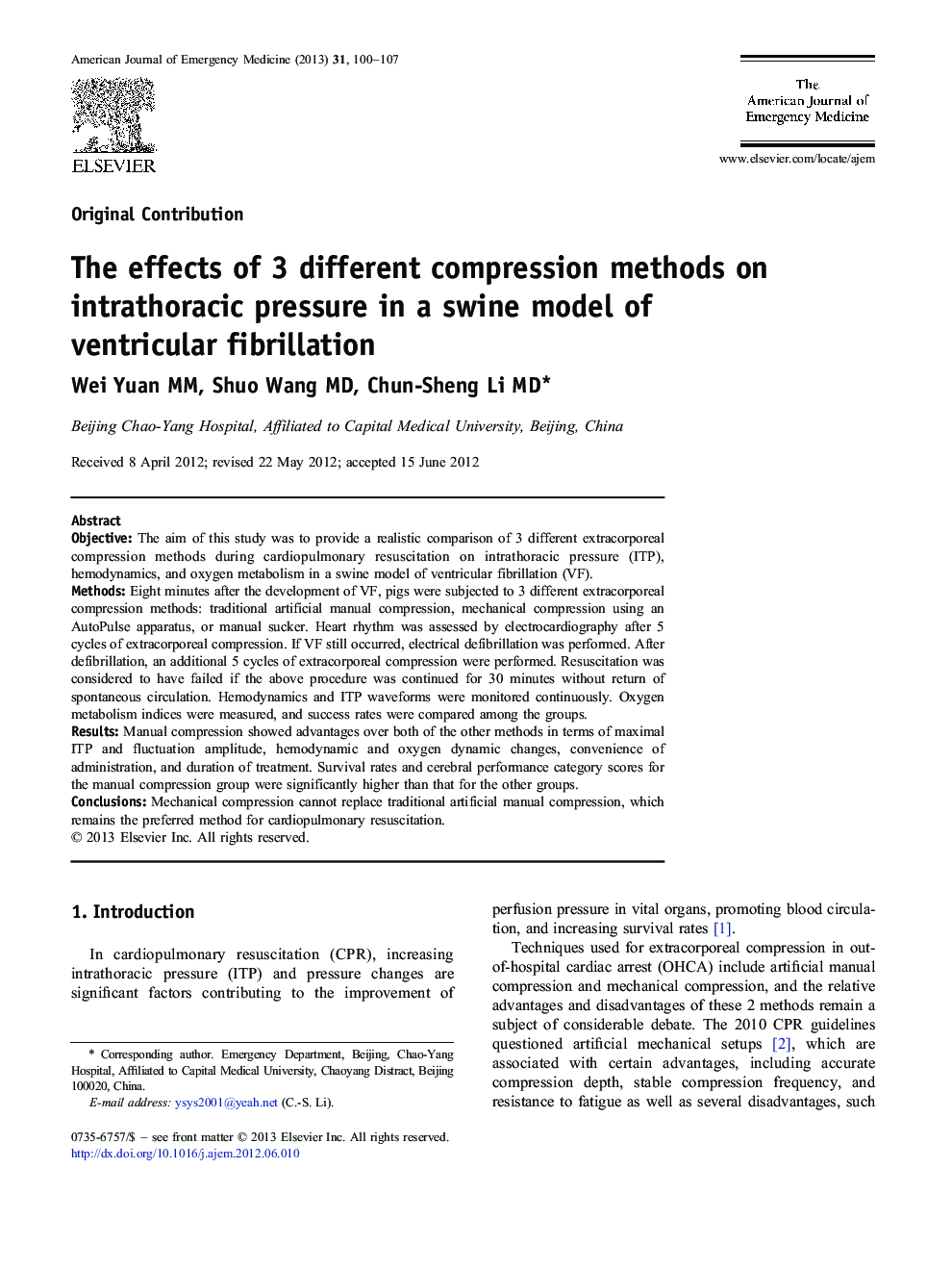| Article ID | Journal | Published Year | Pages | File Type |
|---|---|---|---|---|
| 3224144 | The American Journal of Emergency Medicine | 2013 | 8 Pages |
ObjectiveThe aim of this study was to provide a realistic comparison of 3 different extracorporeal compression methods during cardiopulmonary resuscitation on intrathoracic pressure (ITP), hemodynamics, and oxygen metabolism in a swine model of ventricular fibrillation (VF).MethodsEight minutes after the development of VF, pigs were subjected to 3 different extracorporeal compression methods: traditional artificial manual compression, mechanical compression using an AutoPulse apparatus, or manual sucker. Heart rhythm was assessed by electrocardiography after 5 cycles of extracorporeal compression. If VF still occurred, electrical defibrillation was performed. After defibrillation, an additional 5 cycles of extracorporeal compression were performed. Resuscitation was considered to have failed if the above procedure was continued for 30 minutes without return of spontaneous circulation. Hemodynamics and ITP waveforms were monitored continuously. Oxygen metabolism indices were measured, and success rates were compared among the groups.ResultsManual compression showed advantages over both of the other methods in terms of maximal ITP and fluctuation amplitude, hemodynamic and oxygen dynamic changes, convenience of administration, and duration of treatment. Survival rates and cerebral performance category scores for the manual compression group were significantly higher than that for the other groups.ConclusionsMechanical compression cannot replace traditional artificial manual compression, which remains the preferred method for cardiopulmonary resuscitation.
